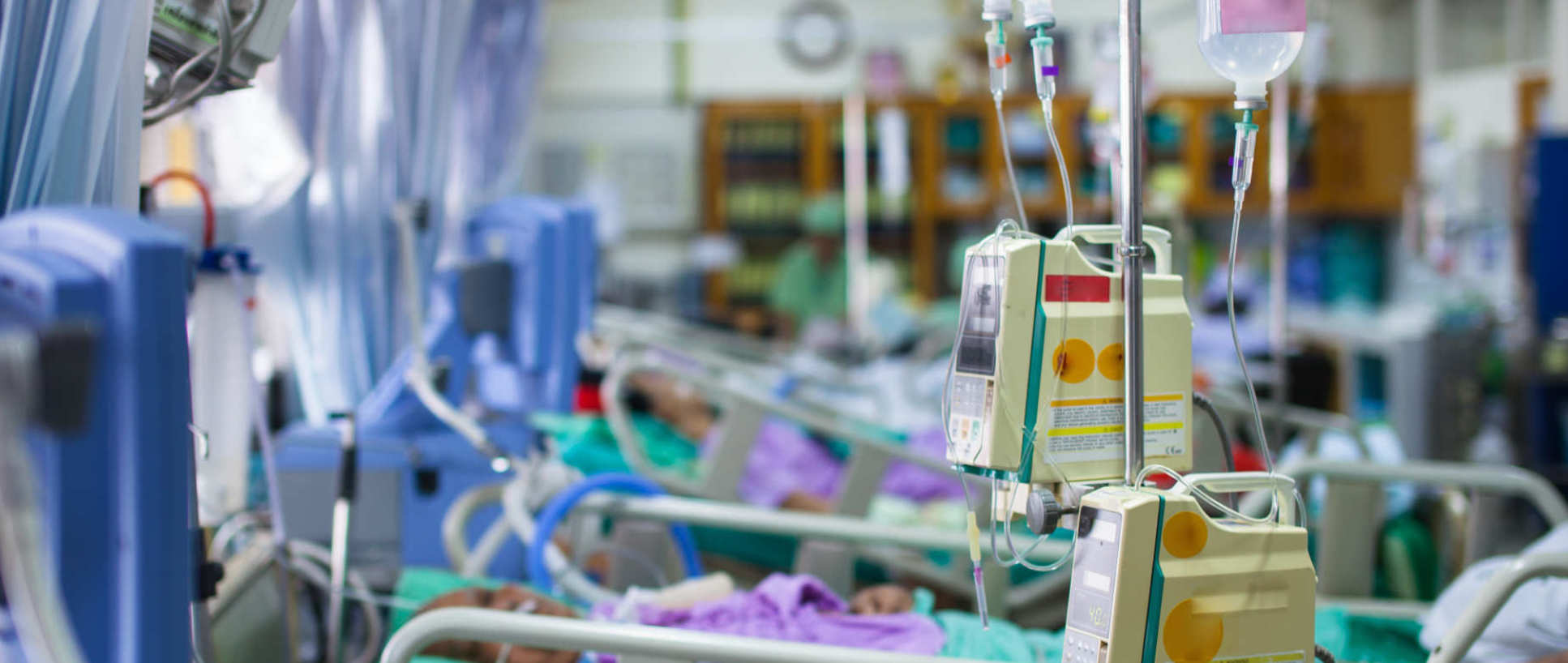BibTex format
@article{Gordon:2016:10.1001/jama.2016.10485,
author = {Gordon, AC and Mason, AJ and Thirunavukkarasu, N and Perkins, GD and Cecconi, M and Cepkova, M and Pogson, DG and Aya, HD and Anjum, A and Frazier, GJ and Santhakumaran, S and Ashby, D and Brett, SJ and VANISH, Investigators},
doi = {10.1001/jama.2016.10485},
journal = {The Journal of the American Medical Association},
pages = {509--518},
title = {Effect of early vasopressin vs norepinephrine on kidney failure in patients with septic shock. The VANISH Randomized Clinical Trial},
url = {http://dx.doi.org/10.1001/jama.2016.10485},
volume = {316},
year = {2016}
}
RIS format (EndNote, RefMan)
TY - JOUR
AB - IMPORTANCE: Norepinephrine is currently recommended as the first-line vasopressor in septic shock; however, early vasopressin use has been proposed as an alternative. OBJECTIVE: To compare the effect of early vasopressin vs norepinephrine on kidney failure in patients with septic shock. DESIGN, SETTING, AND PARTICIPANTS: A factorial (2×2), double-blind, randomized clinical trial conducted in 18 general adult intensive care units in the United Kingdom between February 2013 and May 2015, enrolling adult patients who had septic shock requiring vasopressors despite fluid resuscitation within a maximum of 6 hours after the onset of shock. INTERVENTIONS: Patients were randomly allocated to vasopressin (titrated up to 0.06 U/min) and hydrocortisone (n = 101), vasopressin and placebo (n = 104), norepinephrine and hydrocortisone (n = 101), or norepinephrine and placebo (n = 103). MAIN OUTCOMES AND MEASURES: The primary outcome was kidney failure-free days during the 28-day period after randomization, measured as (1) the proportion of patients who never developed kidney failure and (2) median number of days alive and free of kidney failure for patients who did not survive, who experienced kidney failure, or both. Rates of renal replacement therapy, mortality, and serious adverse events were secondary outcomes. RESULTS: A total of 409 patients (median age, 66 years; men, 58.2%) were included in the study, with a median time to study drug administration of 3.5 hours after diagnosis of shock. The number of survivors who never developed kidney failure was 94 of 165 patients (57.0%) in the vasopressin group and 93 of 157 patients (59.2%) in the norepinephrine group (difference, -2.3% [95% CI, -13.0% to 8.5%]). The median number of kidney failure-free days for patients who did not survive, who experienced kidney failure, or both was 9 days (interquartile range [IQR], 1 to -24) in the vasopressin group and 13 days (IQR, 1
AU - Gordon,AC
AU - Mason,AJ
AU - Thirunavukkarasu,N
AU - Perkins,GD
AU - Cecconi,M
AU - Cepkova,M
AU - Pogson,DG
AU - Aya,HD
AU - Anjum,A
AU - Frazier,GJ
AU - Santhakumaran,S
AU - Ashby,D
AU - Brett,SJ
AU - VANISH,Investigators
DO - 10.1001/jama.2016.10485
EP - 518
PY - 2016///
SN - 0002-9955
SP - 509
TI - Effect of early vasopressin vs norepinephrine on kidney failure in patients with septic shock. The VANISH Randomized Clinical Trial
T2 - The Journal of the American Medical Association
UR - http://dx.doi.org/10.1001/jama.2016.10485
UR - http://www.ncbi.nlm.nih.gov/pubmed/27483065
VL - 316
ER -
 Critical care involves the care of the sickest patients in the hospital. Critically ill patients have usually been through a significant insult to their body (such as trauma, infection, burn) and have developed organ failure and require life-support. Critical Care is the largest theme bringing together clinicians and scientists from diverse backgrounds and includes collaborative research from hospitals throughout north-west London. Investigations range from evaluating biological mechanisms of organ failure through to the development of innovative technologies which allow the short-term and long-term support and recovery of organs.
Critical care involves the care of the sickest patients in the hospital. Critically ill patients have usually been through a significant insult to their body (such as trauma, infection, burn) and have developed organ failure and require life-support. Critical Care is the largest theme bringing together clinicians and scientists from diverse backgrounds and includes collaborative research from hospitals throughout north-west London. Investigations range from evaluating biological mechanisms of organ failure through to the development of innovative technologies which allow the short-term and long-term support and recovery of organs.